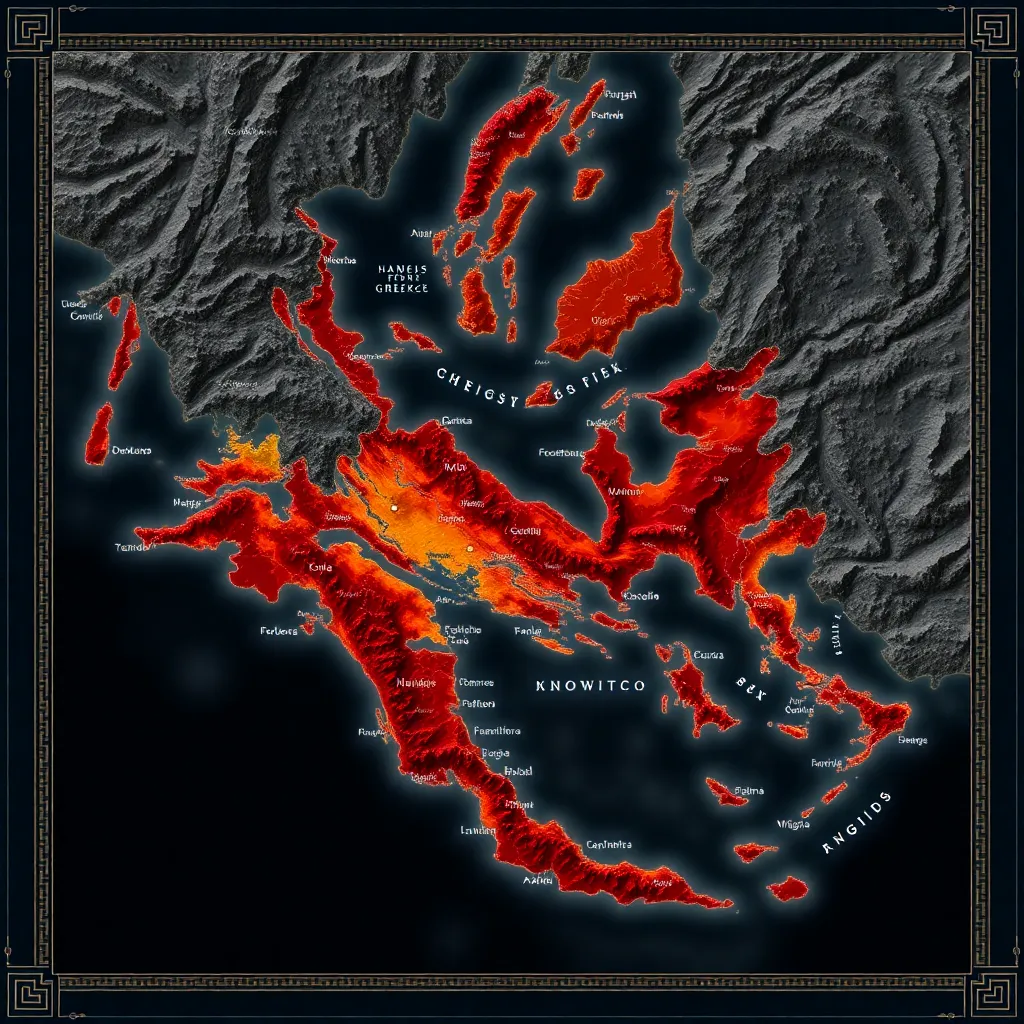The Underworld’s Geography: Mapping Hades and Its Regions
I. Introduction to Hades: The Mythological Underworld
In Greek mythology, Hades refers to both the god and the underworld, a significant realm that serves as the destination for the souls of the deceased. This mythological underworld is not merely a place of punishment but a complex landscape that reflects the beliefs of ancient Greeks about death and the afterlife.
The Underworld acts as a crucial component of Greek mythology, where it is portrayed as a shadowy realm where the souls of the departed journey after death. It is a place that embodies the ancient Greeks’ understanding of life, death, and what lies beyond.
II. The Structure of Hades: An Overview of Its Regions
The geography of Hades is intricate, characterized by various regions, each with distinct functions and significances. Unlike the concept of Hell in other cultures, Hades is not solely a place of eternal torment. Instead, it encompasses a spectrum of experiences for souls based on their lives and actions.
Key differences include:
- Hades includes places of both reward and punishment.
- It is not a singular location but a multi-faceted realm.
- Souls have different experiences based on their earthly lives.
III. The Five Main Regions of Hades
A. The Fields of Asphodel
The Fields of Asphodel is a neutral zone within Hades, often described as a dreary expanse filled with asphodel flowers. It is where the souls of ordinary people reside, those who lived unremarkable lives without great virtue or vice.
Characteristics and significance include:
- A vast, gray landscape representing the souls of the mundane.
- Souls here wander aimlessly, a reflection of their uninspired lives.
B. Elysium (The Elysian Fields)
Elysium, also known as the Elysian Fields, is a paradisiacal region reserved for heroes and the virtuous. Those who earned their place in Elysium enjoy eternal bliss and fulfillment.
Key points about Elysium include:
- A beautiful, sunny land filled with meadows and groves.
- Inhabitants include heroes, demigods, and those favored by the gods.
- The concept of reward in the afterlife, reflecting the deeds of the living.
C. Tartarus
Tartarus is the deepest, most terrifying region of Hades, known as a place of punishment for the wicked. It is a stark contrast to both the Fields of Asphodel and Elysium, emphasizing retribution for wrongdoing.
Details about Tartarus include:
- It is depicted as a dark abyss, far below the other regions.
- Commonly associated with the most notorious sinners and mythical figures.
- Serves as a place where justice is served, often through eternal torment.
D. The River Styx
The River Styx is one of the most significant features of Hades. It serves as the boundary between the world of the living and the Underworld. Souls must cross this river to enter Hades, a journey facilitated by Charon, the ferryman.
Important aspects of the River Styx include:
- Souls are required to pay Charon with an obol, a small coin, for passage.
- The river is often described as dark and foreboding.
- It symbolizes the transition from life to death.
E. The Land of the Dead
The Land of the Dead encompasses the various realms within Hades where souls reside. It is a place filled with memories and echoes of their past lives, often linked to mythological narratives that explore themes of fate and consequence.
Features of the Land of the Dead include:
- A realm where souls interact and recall their earthly existence.
- Connection to numerous myths, such as those involving heroes and their journeys.
IV. Notable Figures in Hades
A. Hades: The Ruler of the Underworld
Hades, the god of the underworld, is a significant figure in Greek mythology. He is often depicted as stern and unyielding, overseeing the dead and ensuring the order of his realm.
B. Persephone: Queen of the Underworld
Persephone, the daughter of Demeter, is the queen of Hades. Her abduction by Hades and subsequent dual role as both a goddess of spring and queen of the underworld symbolize the cycle of life and death.
C. Other Significant Mythological Figures and Their Roles
Other notable figures include:
- Charon, the ferryman of the Styx.
- Thanatos, the personification of death.
- Hecate, the goddess associated with magic and necromancy.
V. Symbolism and Interpretation of Hades’ Geography
The geography of Hades offers a rich tapestry of symbolism and interpretation. Scholars have theorized about its structure, suggesting that it reflects the ancient Greeks’ understanding of morality, fate, and the afterlife.
Cultural significance can be observed in:
- The representation of death as a journey rather than an end.
- The moral implications of one’s life choices affecting their afterlife destination.
VI. Modern Representations of Hades in Literature and Media
The influence of Greek mythology on contemporary literature and media is profound. Hades appears in various forms, often reinterpreted for modern audiences.
Comparative analysis shows:
- Ancient depictions focused on morality and justice.
- Modern interpretations often emphasize themes of redemption and personal growth.
VII. The Role of Hades in Greek Religion and Rituals
Worship practices related to the Underworld were integral to ancient Greek religion. Rituals often focused on ensuring safe passage for souls and appeasing the gods of the dead.
Funerary customs included:
- Offering sacrifices to Charon and other deities.
- Performing rites to honor the deceased and ensure their comfort in the afterlife.
VIII. Conclusion: The Enduring Legacy of Hades’ Geography
The geography of Hades remains a captivating subject, reflecting the complexities of life, death, and morality in Greek mythology. Its enduring legacy continues to influence modern culture and beliefs about the afterlife.
In summary, Hades serves not only as a mythology of the dead but as a rich source of philosophical reflection on the human experience of mortality and the unknown that follows.




